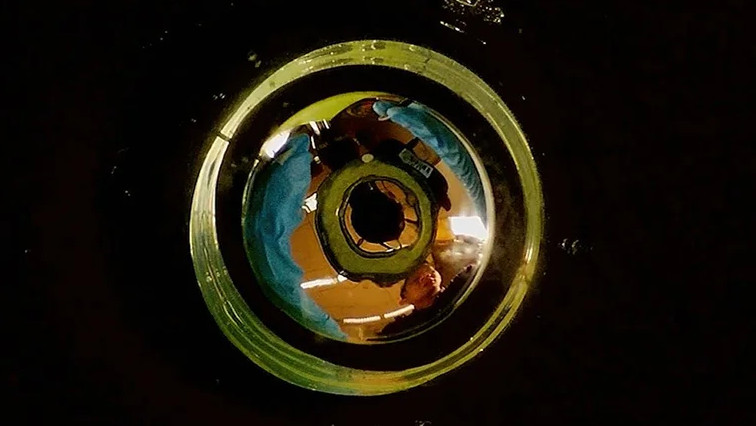Glancing at the trippy colors in the image above, you might be convinced you’re looking at a Dali-inspired riff onThe Persistence of Memory. This flash photo of melting metal is quite real and just as fantastical an achievement, though, since it’s depicting the first example of working, liquid metal RAM.
This liquid metal RAM, called FlexRAM, stems from research done by researchers at Tsinghua University in China. Asreported by IEEE Spectrum, FlexRAM is the first fully flexible resistive RAM device. Its main components involve droplets of liquid metal gallium (charge used for 1/0 binary memory values) suspended and injected into Ecoflex, which is a stretchable biopolymer.

According to Jing Liu, one of the researchers at Tsinghua who worked on FlexRAM, this offers “a theoretical foundation and technical path for future soft intelligent robots, brain-machine interface systems, and wearable/implantable electronic devices.” While this is a revolutionary achievement and may indeed put us closer to a sci-fi future, it’s important to contrast this with the actual performance of FlexRAM today.
The current version of FlexRAM is comprised of eight FlexRAM storage units, which can manage one byte of data information. Phrasing in the original publication could mean this is one byte per unit (which sounds about right), or one byte for the entire array. In either case, that’s hardly consumer-grade memory capacity. And currently, the tech is only good for 3,500 cycles, rather than the millions that some more traditional (and very non-flexible) memory is capable of.

But this technology is still very young, and the fact that this proof of concept can even be executed is promising, althoughsimilar research has been demonstrated elsewhere. Additionally, while FlexRAM’s current capabilities obviously leaves a lot to be desired, it shows promise in other areas. For example, it’s capable of retaining its data for up to 12 hours when switched off— which could mean this has promise as a form of flexible storage, not necessarily just RAM.
Today, FlexRAM is joining the club of computing technologies previously thought impossible. This club includes literalDNA computers, functionally usefulquantum computing, and maybe one day soon, an RTX 4090 that doesn’t melt the power cable because it doesn’t have one (visible).
Get Tom’s Hardware’s best news and in-depth reviews, straight to your inbox.
Christopher Harper has been a successful freelance tech writer specializing in PC hardware and gaming since 2015, and ghostwrote for various B2B clients in High School before that. Outside of work, Christopher is best known to friends and rivals as an active competitive player in various eSports (particularly fighting games and arena shooters) and a purveyor of music ranging from Jimi Hendrix to Killer Mike to the Sonic Adventure 2 soundtrack.